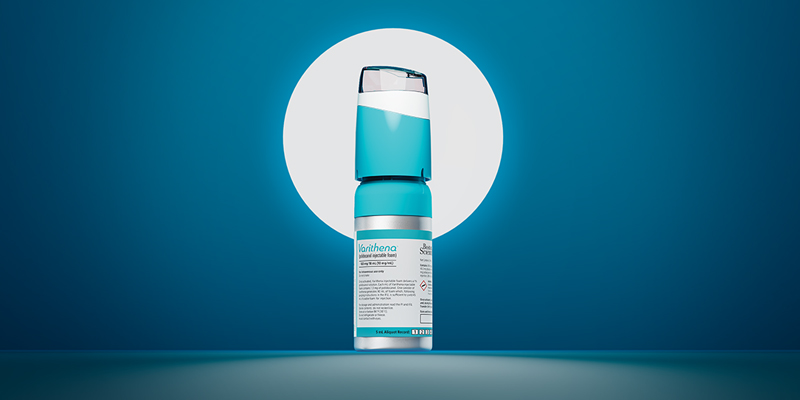Offer your patients a gentler way to treat varicose veins.
Varithena is a gentle microfoam treatment, delivered in as few as 1-2 needle sticks with no tumescent anesthesia. For most people, Varithena improves both physical symptoms related to varicose veins, and their appearance.
Only 1-2 needle sticks per treatment.

Average procedure time of under one hour.
“The improvement was like going from night to day.”
— 58-year-old man treated with Varithena
Overall market preference

Dr. Pappas' 2021 study
60-80% of patients studied prefer attribute combinations that correspond with non-thermal, non-tumescent (NTNT) over thermal ablation—regardless of out-of-pocket costs.1 See why NTNT technologies are the favored choice.
Save your patients time and hassle.
With a procedure time of less than one hour, patients can get back to normal life the same day. Many people only need a single Varithena treatment to see effective results.
And depending on the severity of their varicose veins and symptoms, Varithena is often covered by Medicare and most insurances.

Results that please your patients.
Thurman’s veins stuck out in his thigh and lower leg and would hurt at night, making it hard to sleep. Aching and pain prevented him from doing what he wanted to do. But he didn’t want to have his veins “stripped” so he delayed treatment and suffered with the pain and immobility—until he had them treated with Varithena.
"It truly has been life-changing for our practice… It really has, I feel like the patients are definitely more satisfied. They’re more willing to return for follow-up treatments because this is so easy. It doesn’t interfere with their lifestyle.”
— Lisa Darby, MD
References
1. Evaluating patient preferences for thermal ablation versus non-thermal, non-tumescent varicose vein treatments. Pappas, Peter et al. Journal of Vascular Surgery: Venous and Lymphatic Disorders, Volume 9, Issue 2, 383 - 392




